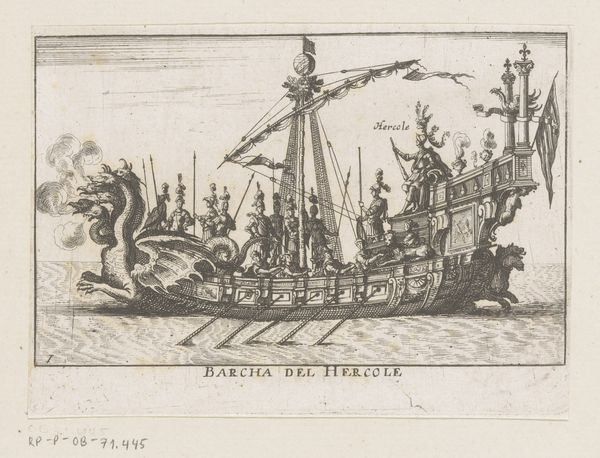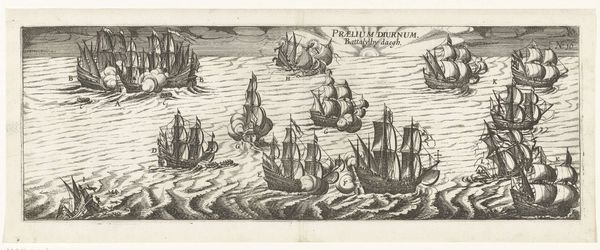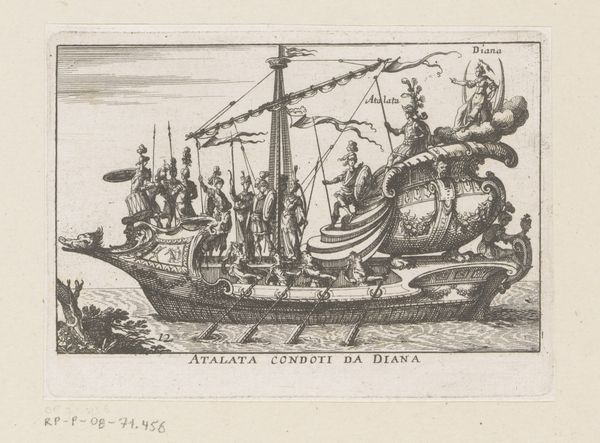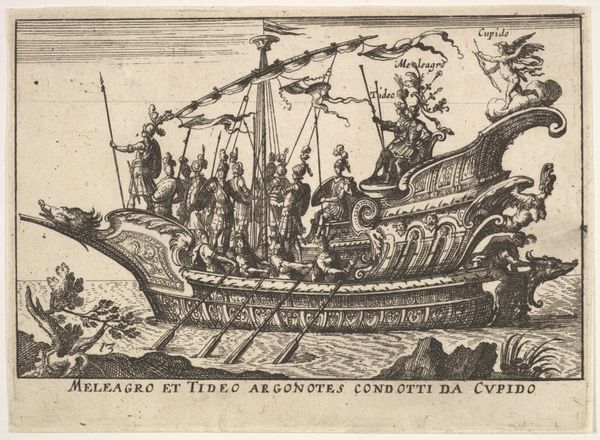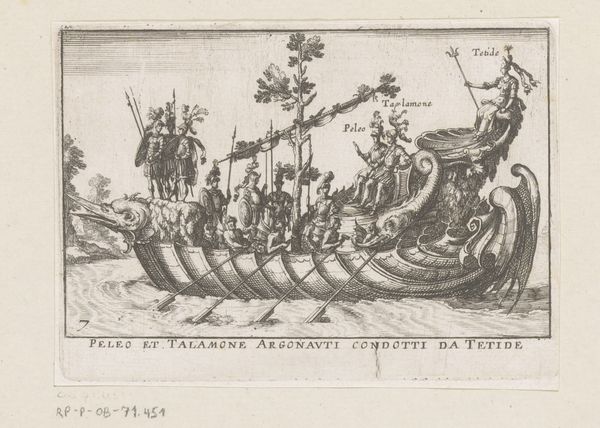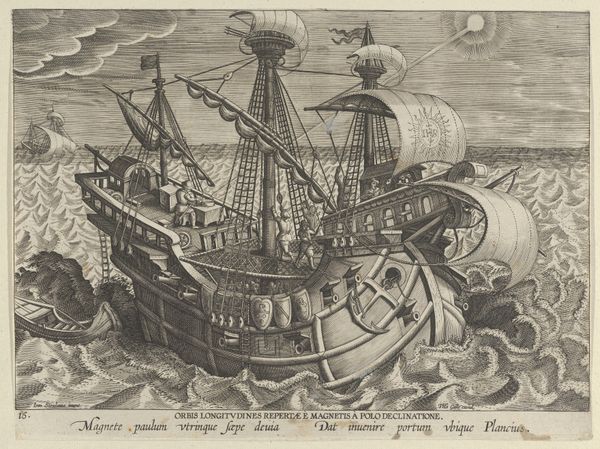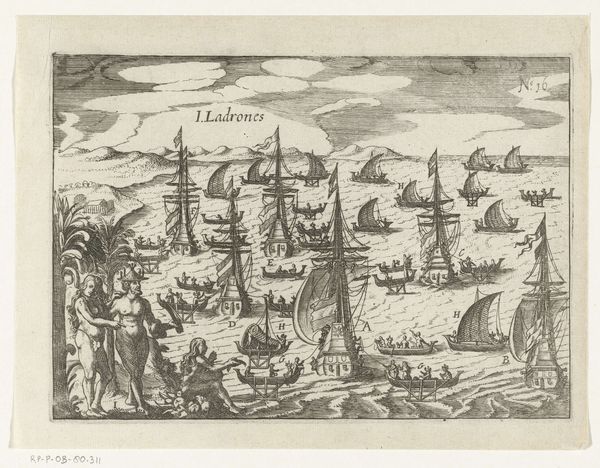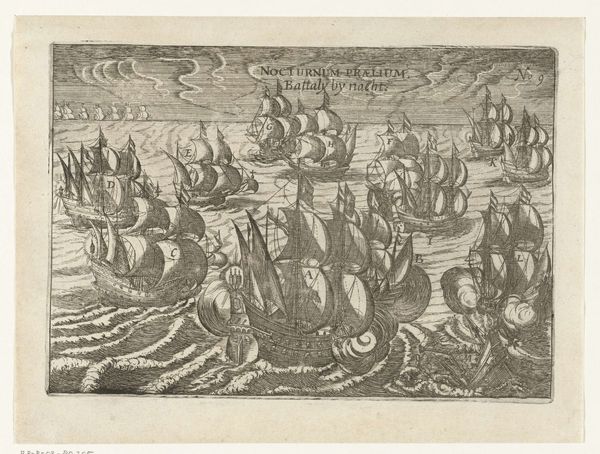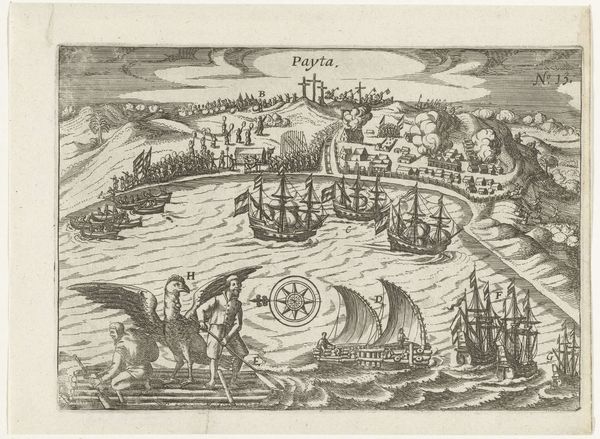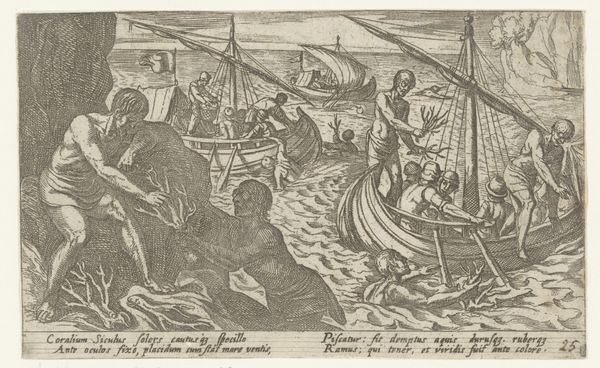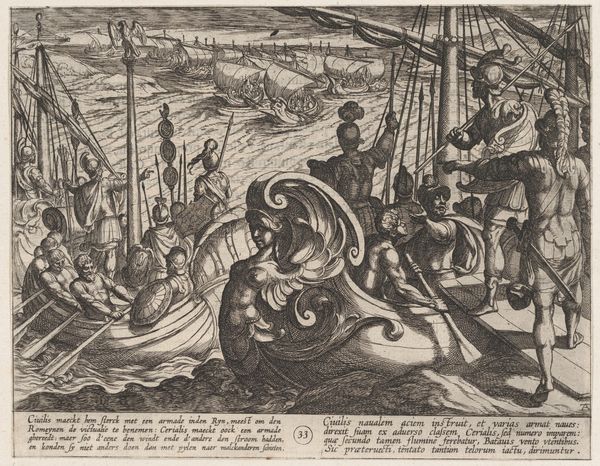
Plate 6: Ship of Castor and Pollux (Barcha de Castor et Poluce), from the series 'The magnificent pageant on the river Arno in Florence for the marriage of the Grand Duke' (Le Magnifique carousel fait sur le fleuve de l'Arne a Florence, pour le mariage du Grand Duc), for the wedding celebration of Cosimo de' Medici in Florence, 1608 1664
0:00
0:00
drawing, print, engraving
#
drawing
#
baroque
#
pen drawing
#
mechanical pen drawing
# print
#
figuration
#
11_renaissance
#
soldier
#
horse
#
line
#
history-painting
#
engraving
Dimensions: Sheet (Trimmed): 3 9/16 × 5 1/4 in. (9 × 13.4 cm)
Copyright: Public Domain
Curator: Let's turn our attention to "Plate 6: Ship of Castor and Pollux," an engraving from 1664 attributed to an anonymous artist. This piece immortalizes a scene from the Florentine wedding celebrations of Cosimo de' Medici in 1608. Editor: My first impression is that of structured chaos, if that makes sense. There's a clear, rigid symmetry, but the details—the figures, the ornamentation—feel almost overwhelming. What sociopolitical events were informing its creation? Curator: Indeed. The piece shows a galley, richly ornamented with sculptural figures and filled with what seem to be costumed participants. Look at the fine lines and meticulous detail; notice how the engraver has used hatching to create depth and shadow. Editor: Right, because beyond just displaying artistry, these lavish displays of power often served very clear ideological and social functions. This image immortalizes wealth during an era when a substantial portion of the population lived in relative squalor. Does the glorification of wealth influence the artwork, perhaps normalizing existing hierarchies? Curator: One cannot overlook the overt classical references; the ship itself is named for Castor and Pollux, mythological twins associated with protection and heroism. The inclusion of such figures works to legitimize the ruling class. The horse figures adorning the prow, and the statues atop suggest this. The pageantry is not merely celebratory but an act of image building. Editor: Precisely. Furthermore, note that these symbolic displays—likely organized by a dominant power—had a lasting legacy due to engravings. A single performance reached a limited audience, but here it lives on indefinitely. How has this portrayal been received critically? Has there been scholarly inquiry into the optics? Curator: I think that's fascinating to consider. Speaking from the visual makeup alone, consider the use of line. It is quite controlled, refined, creating a clear hierarchy of forms, but doesn't quite feel celebratory. Editor: Thank you, looking at the historical context as well as its composition offers many layers. Curator: And considering solely its aesthetic decisions lets me notice so many details in its composition that inform my impression.
Comments
No comments
Be the first to comment and join the conversation on the ultimate creative platform.
